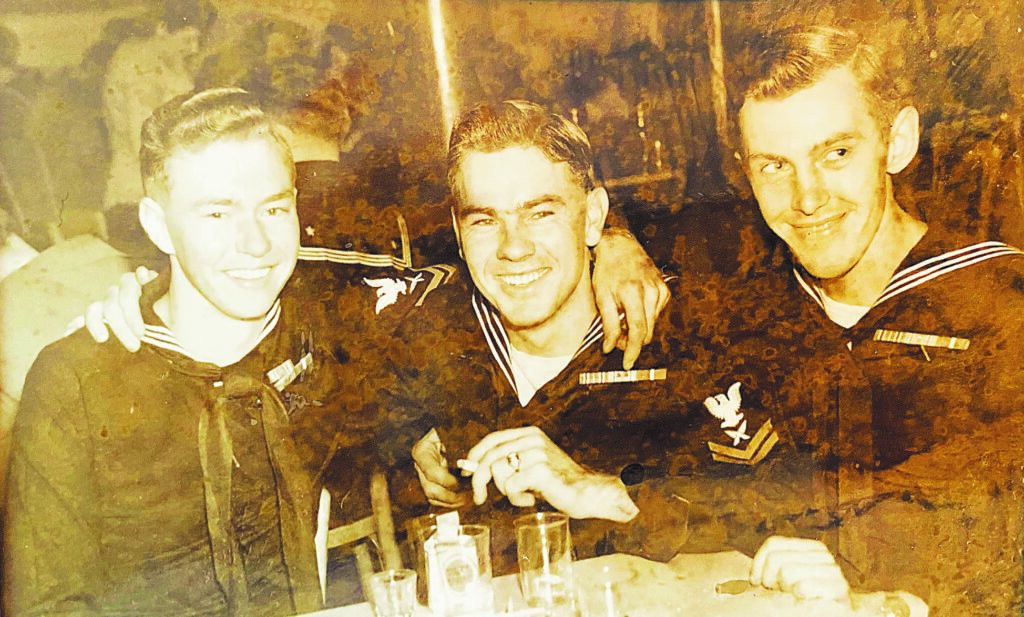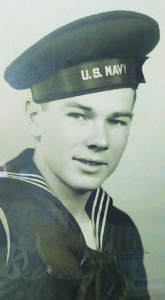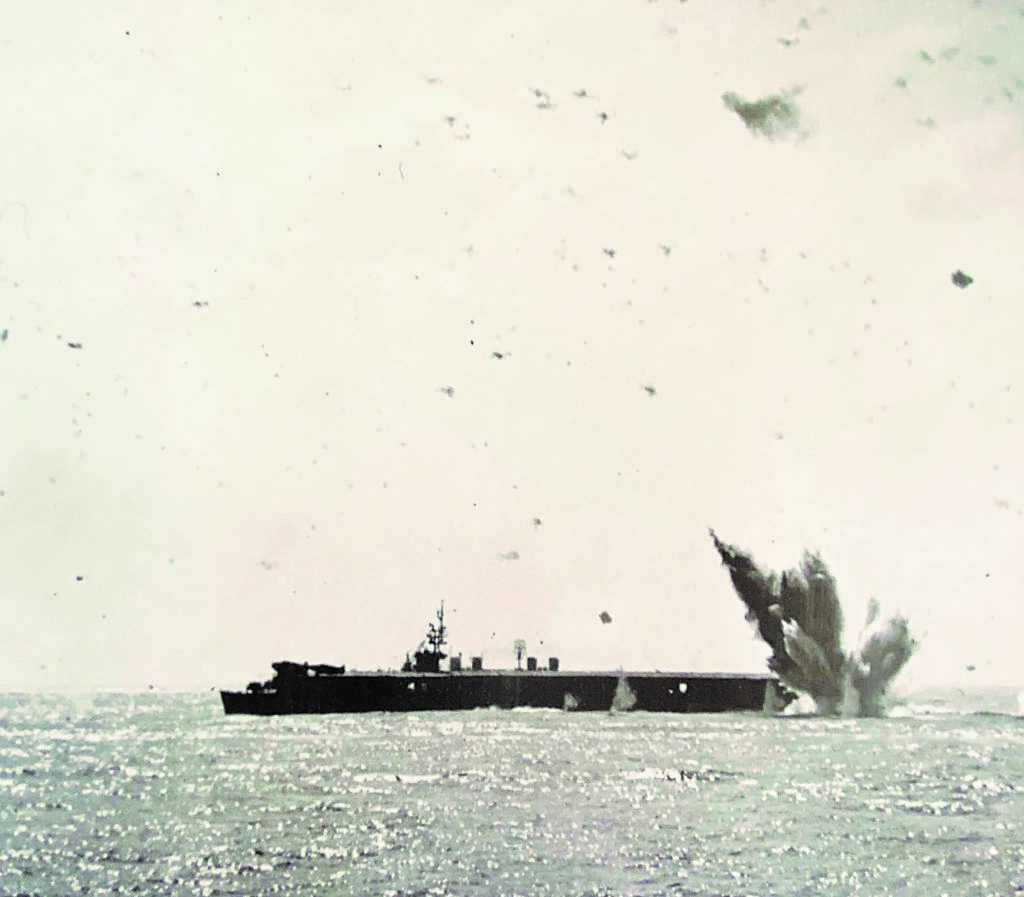
A sailor on the U.S.S. Bataan
By David Fleet
Special to the Leader
Oxford resident Webster Gemmel should have had plenty of war stories to share. However, like many of the “Greatest Generation,” those stories of battles half a world away are too often lost.
A glimpse of Gemmel’s Navy life in WWII, recently became a little clearer.
Gemmel had the distinction of serving on the 622 feet U.S.S. Bataan, a light aircraft carrier, that first sailed Aug. 1, 1943 from Pier 2, Philadelphia Navy Yard. Following Gemmel’s death in 2019, his grandson and Brandon Township resident, Rich Hubble, recovered an intricate day-to-day log of the ship’s activity. The unique log, released long after the information was unclassified covers August 1943 until Oct. 17, 1945.

The war log of the USS Bataan, about 200 pages, includes details of battles, ports and some of the hardships faced by both the Navy personnel along with pilots and Marines onboard.
An upper peninsula native and 1942 Brimley High School graduate, Gemmel, or also known as, “Web” often told the story of the day he enlisted.
“Web would say, ’WWII was easy compared to growing up in Brimley,’” recalls Hubble. “He wanted to get out of the Upper Peninsula.”
“The recruiter would line the boys up when they went in and point to each one saying, ‘ Army, Navy, Air Force or Marines,’” he said. “You really did not have a choice of which branch you went in.”
Gemmel was selected for the Navy and shipped from Michigan to a port in San Diego where he boarded the Bataan.
According to the log, following a few months of sea trials in March 1944 the Bataan passed through the Panama Canal and into the Pacific Ocean. The last port stateside was San Diego between March 15-17, 1944.
Once onboard an officer asked if there was anyone that could read. Gemmel responded that he could, so they pulled him out of line.
Gemmel was assigned the task of receiving an order from the captain then making the announcement to whomever needed to hear it, said Hubble.
“Web could not understand why the captain did not just say it himself,” he said.
Gemmel was assigned to work on the bridge, where he received messages directly for the ship commander.
The log notes arriving in Pearl Harbor after five days at sea near Fox Island and pulling within 50 yards of a rusting U.S.S. Utah, one of the remnants of the attack on Pearl Harbor, 836 days earlier.
Over the course of the next 16 months the log describes many battles in the South Pacific and attacks by the Japanese on the sea and in the air.
“Web often recalled close calls from Kamikaze’s,” said Hubble.
A very close call in the log was in the vicinity of Amami and Kikai Islands.
On April 17 1945, during an intensive enemy attack, a Kamikaze almost hit the Bataan as the crew opened up with 40 and 20 mm guns. According to the report, it passes over the ship just aft of the island, barely clears the radar antenna, crashes in the water just off the stern. The deck is splattered with fragments on the fragments on the forecastle and the signal bridge; 1 dead, 14 wounded. The Bataan was part of the Invasion of the Mariana Islands, Battle of the Philippine Sea, Battle of Okinawa and the attack on Japanese home islands.
The Bataan would survive the battles of the South Pacific and sail into New York Harbor after more than 164,686 nautical miles, 14,622 deck landings. The ship recorded 70 casualties. After serving in both World War II and the Korean conflict, the Bataan was decommissioned in 1954.
On Sept. 20, 1997, a second U.S. Navy warship to bear the name Bataan was commissioned. The multi-purpose amphibious assault ship carries more than 2,500 sailors and Marines. It is currently deployed in the Atlantic.
Following the war, Gemmel moved to Oakland County where he attended classes at Pontiac Business Institute. He earned a degree in accounting and was employed at Oakland County until his retirement in his 70s.


Leave a Reply